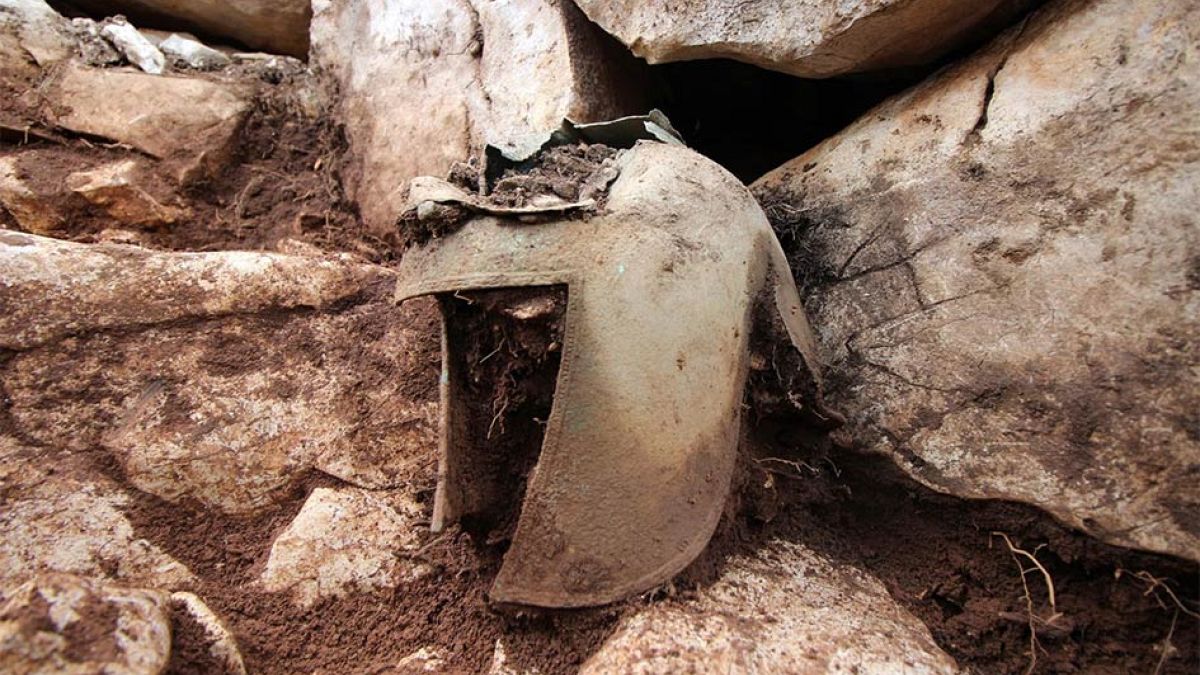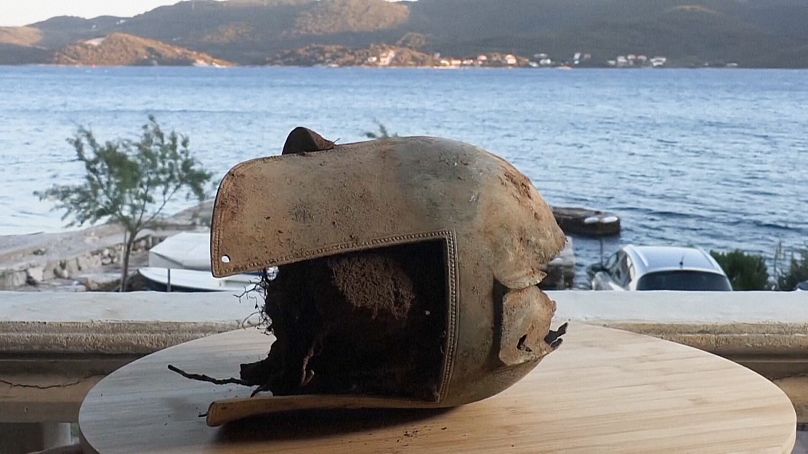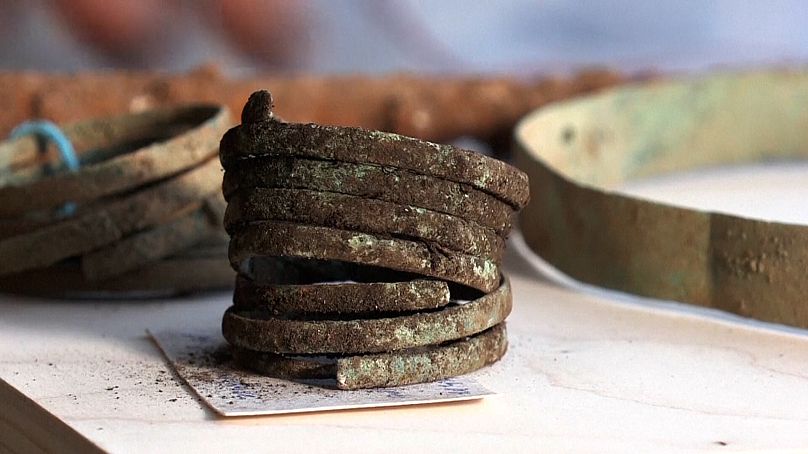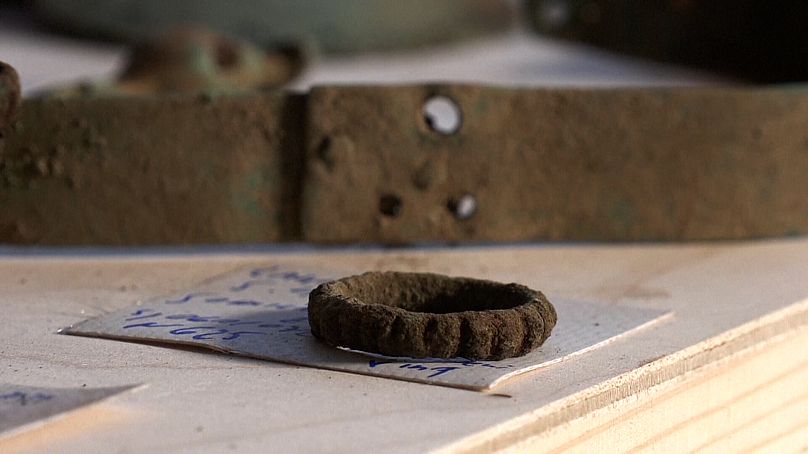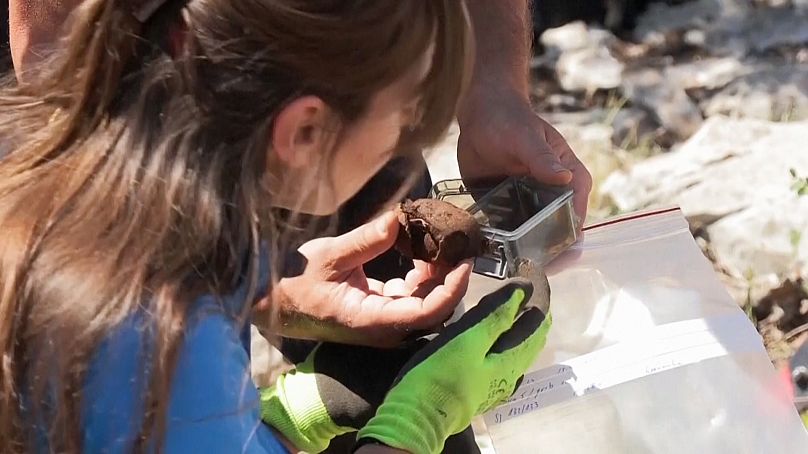The Greek helmet hints at an important and powerful culture before the arrival of the Romans.
Archaeologists have unearthed an ancient Greek helmet from burial mounds in southern Croatia, shedding new light on the history of the Illyrians, a tribal people from the eastern Adriatic and the Balkans.
Near the village of Zakotorac on the Peljesac peninsula, approximately 70 kilometres northwest of Dubrovnik, a team of archaeologists, led by Hrvoje Potrebica from the University of Zagreb, uncovered various artefacts, including lavish jewellery and a Greco-Illyrian helmet.
The helmet is the second of its kind found in the area, following a similar discovery in 2020. Both items date back to the 5th or 6th century BC, a period when historians believe local Illyrian communities flourished.
Although little is known about Illyrian culture or language, they are known to have lived in tribes. The tribe inhabiting the Peljesac area of modern-day southern Croatia is believed to have thrived due to their control over strategically significant maritime trade routes around the peninsula.
How do the Greco-Illyrian helmets help rewrite history?
Despite being discovered in burial mounds, the helmets were not part of burial rituals. Experts speculate that they were deposited much later, possibly as votive gifts in a religious or ceremonial context.
"They were both found as separate objects, laid in a way which indicates that this was some kind of a cult practice," explains archaeologist Hrvoje Potrebica from the University of Zagreb.
"These were votive gifts left to pay respect to deities or people buried here. We don't think that they are related to any specific person buried here because the site contains remains of dozens of individuals."
Numerous burial mounds have been discovered in recent years in the area and on nearby islands. While most remain unexamined, the recent findings from sites at Zakotorac and nearby Nakovana suggest these locations may have held special spiritual significance to 5th-century Illyrians from the region.
Roman conquest and its impact
Illyrian tribes, that lived along the eastern Adriatic since at least second millennium BC, were eventually brutally defeated by the invading Romans in the latter years of the 1st century BC.
Their cultural sites and settlements seem to have been deserted approximately 500 years after the time of the helmets.
Local historian Ivan Pamic states, "These mounds were likely robbed, probably by the Romans, who arrived here in the last decades of the 1st century BC. At the time Octavian, the future Roman emperor, led military expeditions against Illyrians on the eastern Adriatic."
Other artefacts discovered include pins, jewellery pieces, buckles, glass beads, and fibulas (ancient brooches used for fastening clothes).
Challenging traditional colonial perspectives
At the time, Greek city-states founded thriving colonies throughout the Mediterranean, some of the most important ones in the Adriatic were on the modern-day Croatian islands of Vis, Hvar, and Korcula - just across the narrow Peljesac channel from mainland Illyrians.
The findings appear to show just how wealthy local elites had been at the time.
"The wealth of this community, which lived here, which can be seen in many artefacts found in burial cairns, most likely came about because of trade and the control of trade routes passing from the southeast towards the northwest and on towards the interior of the Balkans," says Domagoj Perkic, archeologist and curator at Dubrovnik Archeological Museum.
The findings may also help change the dominant perspective about the history of this part of the Mediterranean, which is traditionally told through Greek or Roman sources.
"In the past, we had no access to this data, we only had to rely on ancient sources and our knowledge of the Greeks, so we viewed these communities via the colonial lens, through the eyes of those who arrived here," adds Potrebica.
Check out the video in the web player above for a closer look at the incredible archaeological discoveries.
